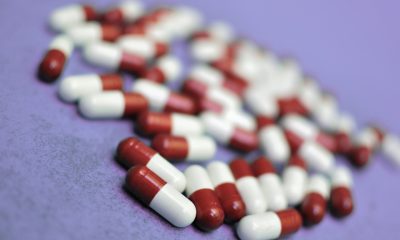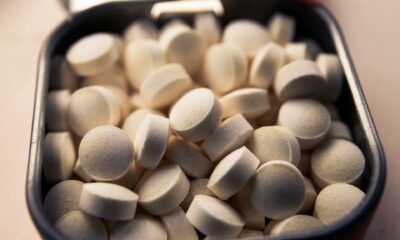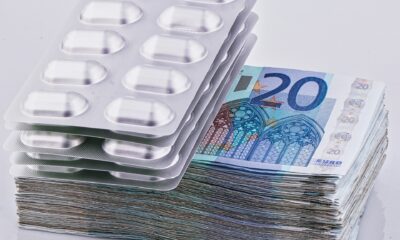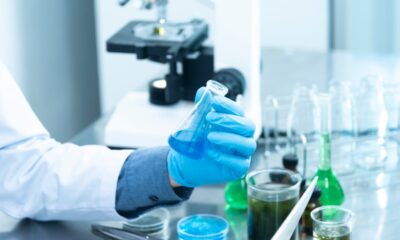Biotech
Eli Lilly Posts 68% Higher Q1 Profit, Novavax Sales Fall 2.2% in Q2
Eli Lilly’s first-half 2023 revenues surged 31% to $20 billion, driven by Mounjaro’s $4.9 billion in sales, dominating the company’s earnings. Trulicity, in contrast, saw a 29% drop in sales. Eli Lilly raised its annual revenue forecast, expecting $45.4 to $46.6 billion. Meanwhile, Novavax’s Q2 revenue fell 2.2% due to declining Covid-19 vaccine demand.

Eli Lilly is holding its own, buoyed by Mounjaro. The American laboratory has concluded the first half of the year with double-digit increases in both its profits and its turnover. Between January and June, the group earned 68% more, up to $5.2 billion.
Eli Lilly’s revenues for the first half of the year amounted to $20 billion , representing a 31% increase over the same period last year. The group attributed the good figures to the revenues generated by certain medicines such as Mounjaro, which totalled revenues of $4.9 billion in the first six months, compared to $1.54 billion in the same period of the previous year.
The drug of the moment, approved for treating type 2 diabetes and weight control, is now the drug that dominates Eli Lilly’s revenues. It was followed by Trulicity, which had sales of $2.7 billion, 29% less than in the first half of 2023. The rest of the main drugs marketed by the American pharmaceutical company increased their sales by double digits in the first six months of the year.
Eli Lilly now has Mounjaro as its main drug on the market, dominating the group’s revenues
Eli Lilly has revised its growth forecast for the full year upwards, estimating revenues of between $45.4 billion and $46.6 billion, an increase of $3 billion from its last forecast. The increase is expected to be driven in particular by revenues from Mounjaro, a drug it will soon launch outside the United States, as well as other drugs such as Zepbound.
“Mounjaro, Zepbound and Verzenio led our strong second quarter financial results as we advanced our manufacturing expansion program,” said Eli Lilly President and CEO David Ricks.
Ricks added that he also welcomed “the worldwide growth of our medicines for cancer, neurological disorders and autoimmune diseases.”
Besides Eli Lilly, Novavax, another American biotech company, is in the focus
Novavax closes the second quarter at double speed. The American group, which does not present cumulative results, has ended the period between April and June with a turnover of $415 million, 2.2% less than in the second quarter of the previous year.
The company attributes the decline to lower demand for Covid-19 vaccines and has therefore also cut its growth forecast for the full year to $375 million in vaccine revenue alone. In its previous forecast, Novavax had predicted revenue of between $400 million and $600 million.
Despite the drop in revenue, the American group managed to boost its profits in the second quarter to $162 million, a figure that contrasts with the profits it recorded in the same period of the previous year of $58 million.
Novavax expects $275 million to $375 million in revenue from its vaccines by year-end
Last May, Sanofi announced the purchase of 4.9% of Novavax for 65 million euros. With this agreement, the American company was able to withdraw its warning about the viability of the business (going concern).
The terms of the agreement include a co-exclusive license to co-commercialize Novavax’s Covid-19 vaccine worldwide, except in countries with existing advance purchase agreements in place, as well as in India, Japan and South Korea; and an exclusive license for Novavax’s Covid-19 vaccine to be used in combination with Sanofi’s influenza vaccines.
Novavax is an American vaccine development company based in Gaithersburg, Maryland. The company has supply agreements for different drugs with different countries in the European Union (EU), the United States, the United Kingdom, Canada and Australia. It has a workforce of more than 1,500 employees worldwide. It develops and supplies two billion doses annually for different viruses
__
(Featured image by Jakub Zerdzicki via Unsplash)
DISCLAIMER: This article was written by a third party contributor and does not reflect the opinion of Born2Invest, its management, staff or its associates. Please review our disclaimer for more information.
This article may include forward-looking statements. These forward-looking statements generally are identified by the words “believe,” “project,” “estimate,” “become,” “plan,” “will,” and similar expressions. These forward-looking statements involve known and unknown risks as well as uncertainties, including those discussed in the following cautionary statements and elsewhere in this article and on this site. Although the Company may believe that its expectations are based on reasonable assumptions, the actual results that the Company may achieve may differ materially from any forward-looking statements, which reflect the opinions of the management of the Company only as of the date hereof. Additionally, please make sure to read these important disclosures.
First published in PlantaDoce and PlantaDoce A third-party contributor translated and adapted the article from the original. In case of discrepancy, the original will prevail.
Although we made reasonable efforts to provide accurate translations, some parts may be incorrect. Born2Invest assumes no responsibility for errors, omissions or ambiguities in the translations provided on this website. Any person or entity relying on translated content does so at their own risk. Born2Invest is not responsible for losses caused by such reliance on the accuracy or reliability of translated information. If you wish to report an error or inaccuracy in the translation, we encourage you to contact us

-

 Crypto2 weeks ago
Crypto2 weeks agoCrypto Markets Slide as Bitcoin Breaks $90K, Year-End Pessimism Grows
-

 Impact Investing1 week ago
Impact Investing1 week agoTreeblock Showcases Sustainability Solutions at ADIPEC Abu Dhabi
-

 Cannabis2 weeks ago
Cannabis2 weeks agoRemexian Wins Legal Battles Amid German Cannabis Licensing Dispute
-

 Impact Investing4 days ago
Impact Investing4 days agoHigh Awareness, Low Adoption: The VSME Challenge for European SMEs

























